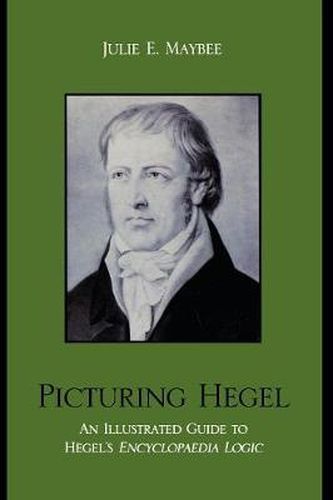Readings Newsletter
Become a Readings Member to make your shopping experience even easier.
Sign in or sign up for free!
You’re not far away from qualifying for FREE standard shipping within Australia
You’ve qualified for FREE standard shipping within Australia
The cart is loading…






In her innovative take on G.W. F. Hegel’s The Encyclopaedia Logic, Julie E. Maybee uses pictures and diagrams to cut through the philosopher’s dense, difficult writing. Picturing Hegel: An Illustrated Guide to Hegel’s Encyclopaedia Logic utilizes diagrams in order to rehabilitate Hegel’s logic for serious consideration by showing how each stage develops step-by-step from earlier stages according to definite, logical patterns. This interpretation makes Hegel’s work accessible and understandable for new and experienced readers alike. Because Hegel uses the same logic in all of his works, Maybee’s analysis and defense of the logic will capture the attention of those readers interested in Hegel’s ethics, politics, history, philosophy of religion, and phenomenology. Through the included diagrams, Maybee is able to define central Hegelian concepts such as ‘being-in-itself,’ and ‘being-in-and-for-itself’ with a new level of precision. Maybee argues that Hegel’s logic does not include the one logistical pattern most often attributed to him; namely, the pattern ‘thesis-antithesis-synthesis.’ Rather, Hegel’s model of logic was more scientific than formalistic in nature, as the philosopher himself pointed out. Hegel considered himself an encyclopedic culmination of Western philosophy in some ways, and indeed his work summarizes many of the presuppositions of Western philosophy. By picturing Hegel’s logic, we can gain a greater understanding of ourselves.
$9.00 standard shipping within Australia
FREE standard shipping within Australia for orders over $100.00
Express & International shipping calculated at checkout
In her innovative take on G.W. F. Hegel’s The Encyclopaedia Logic, Julie E. Maybee uses pictures and diagrams to cut through the philosopher’s dense, difficult writing. Picturing Hegel: An Illustrated Guide to Hegel’s Encyclopaedia Logic utilizes diagrams in order to rehabilitate Hegel’s logic for serious consideration by showing how each stage develops step-by-step from earlier stages according to definite, logical patterns. This interpretation makes Hegel’s work accessible and understandable for new and experienced readers alike. Because Hegel uses the same logic in all of his works, Maybee’s analysis and defense of the logic will capture the attention of those readers interested in Hegel’s ethics, politics, history, philosophy of religion, and phenomenology. Through the included diagrams, Maybee is able to define central Hegelian concepts such as ‘being-in-itself,’ and ‘being-in-and-for-itself’ with a new level of precision. Maybee argues that Hegel’s logic does not include the one logistical pattern most often attributed to him; namely, the pattern ‘thesis-antithesis-synthesis.’ Rather, Hegel’s model of logic was more scientific than formalistic in nature, as the philosopher himself pointed out. Hegel considered himself an encyclopedic culmination of Western philosophy in some ways, and indeed his work summarizes many of the presuppositions of Western philosophy. By picturing Hegel’s logic, we can gain a greater understanding of ourselves.